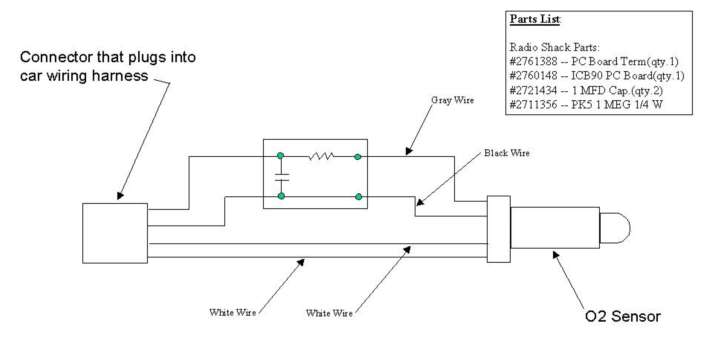You can order ready made mileliminators from
http://www.nautilusperformance.com/catalog/c12_p1.html
1) Drive up Rhino ramps ($40 at Advance). Or jack up the car and put on jack stands.
2) Disconnect battery negative terminal.
3) Go under and unplug connectors and then unscrew both (if a Duratec; one if it is a Zetec) BOTTOM O2 sensors (22mm or 7/8 inch crescent wrench $7. You can buy a O2 sensor socket if you want, $12 at Advance).
4) In the comfort of kitchen table, splice (wire splice connectors $3) the mileliminators to the O2 sensor wires (clear and explicit instructions come with the mileliminators). Tape connection well with duct tape (water in connectors will give you P0136 or P0156 CEL codes).
5) Reinstall O2 sensors to vehicle.
6) Reconnect negative terminal battery
Took me about 1 hour 15 minutes. Vehicle might run rough for a day or so until PCM goes through the OBD II drive cycle again.
http://www.nautilusperformance.com/catalog/c12_p1.html
http://www.nautilusperformance.com/catalog/c12_p1.html
1) Drive up Rhino ramps ($40 at Advance). Or jack up the car and put on jack stands.
2) Disconnect battery negative terminal.
3) Go under and unplug connectors and then unscrew both (if a Duratec; one if it is a Zetec) BOTTOM O2 sensors (22mm or 7/8 inch crescent wrench $7. You can buy a O2 sensor socket if you want, $12 at Advance).
4) In the comfort of kitchen table, splice (wire splice connectors $3) the mileliminators to the O2 sensor wires (clear and explicit instructions come with the mileliminators). Tape connection well with duct tape (water in connectors will give you P0136 or P0156 CEL codes).
5) Reinstall O2 sensors to vehicle.
6) Reconnect negative terminal battery
Took me about 1 hour 15 minutes. Vehicle might run rough for a day or so until PCM goes through the OBD II drive cycle again.
http://www.nautilusperformance.com/catalog/c12_p1.html
Last edited:




